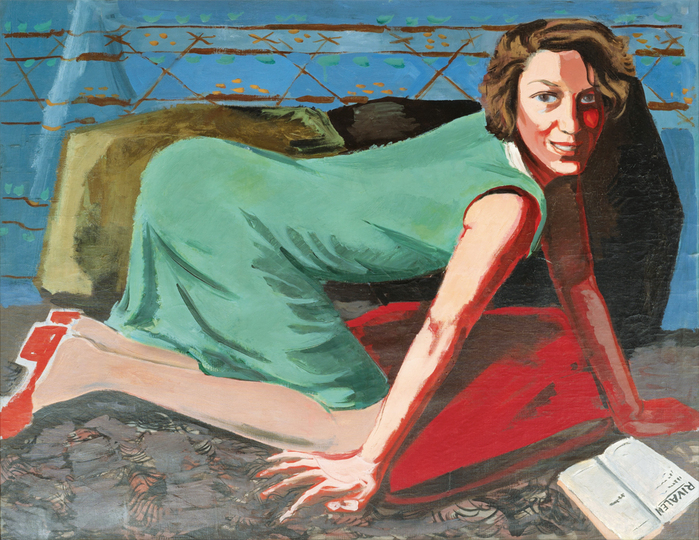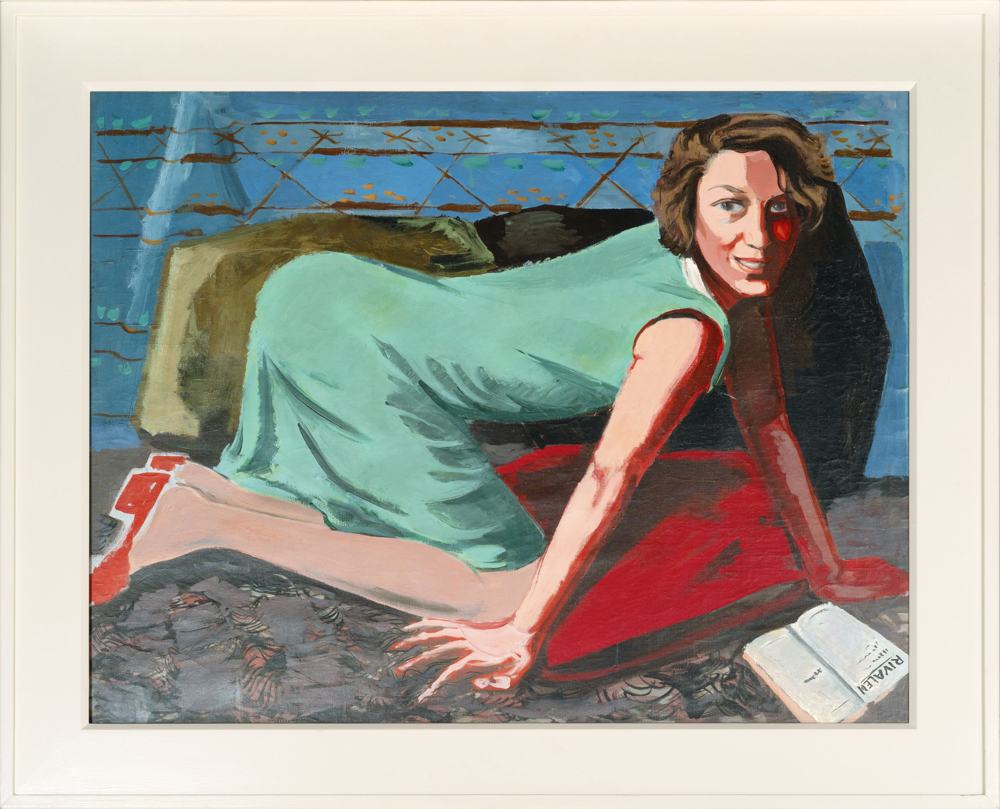The Actress Anneliese Born
Karl Kluth (Halle/Saale 1898 - Hamburg 1972)

Lot-No. 343
Around 1929. Oil/canvas. 78,5 x 100,5 cm. On the reverse inscribed Karl Kluth estate. Minor rest. Like other members of the Hamburg Secession, Kluth explored the relationship between line, surface and color in this major work of the late 1920s. The artists examined the hierarchical relationship between these elements or attempted to allow them to achieve an equal effect in the picture. Typical of this are block-like areas of color, sometimes with little internal modeling, as here in the actress's dress, and above all the characteristic outlines. These are often striking and colorful and only loosely bound to the forms, as in Anneliese Born's right hand, or expand into small areas, as in her face. A contrast of light and dark thus complements the strong effect of red and green and further enhances the dynamism and drama of the already theatrical motif of the kneeling woman. - Painter and graphic artist. K. studied at the Karlsruhe academy under A. Haueisen and was master student of A. Babberger. In 1938/29 he was awarded the first Lichwark prize. He cooperated with E. Munch in Norway. 1951 to 1962 he was professor at the Hamburg academy, where he trained the painters of the artist group 'Zebra'. He was awarded the Edwin Scharff prize in 1957 and was guest of honour of the Villa Massimo, Rome. Mus.: Hamburg (Kunsthalle, Altonaer Museum, Museum für Kunst u. Gewerbe a. others), Berlin (Nationalgalerie), Schleswig (SHLM), Hannover (Sprengelmuseum), Halle (Moritzburg) a. others. Lit.: Thieme-Becker, Der Neue Rump, Ausst.-Kat. K. K, Hamburg 1998, H. Spielmann: K. K. a. others.
Karl Kluth: The Actress Anneliese Born
Karl Kluth (Halle/Saale 1898 - Hamburg 1972)
The Actress Anneliese Born
Lot-No. 343
Around 1929. Oil/canvas. 78,5 x 100,5 cm. On the reverse inscribed Karl Kluth estate. Minor rest. Like other members of the Hamburg Secession, Kluth explored the relationship between line, surface and color in this major work of the late 1920s. The artists examined the hierarchical relationship between these elements or attempted to allow them to achieve an equal effect in the picture. Typical of this are block-like areas of color, sometimes with little internal modeling, as here in the actress's dress, and above all the characteristic outlines. These are often striking and colorful and only loosely bound to the forms, as in Anneliese Born's right hand, or expand into small areas, as in her face. A contrast of light and dark thus complements the strong effect of red and green and further enhances the dynamism and drama of the already theatrical motif of the kneeling woman. - Painter and graphic artist. K. studied at the Karlsruhe academy under A. Haueisen and was master student of A. Babberger. In 1938/29 he was awarded the first Lichwark prize. He cooperated with E. Munch in Norway. 1951 to 1962 he was professor at the Hamburg academy, where he trained the painters of the artist group 'Zebra'. He was awarded the Edwin Scharff prize in 1957 and was guest of honour of the Villa Massimo, Rome. Mus.: Hamburg (Kunsthalle, Altonaer Museum, Museum für Kunst u. Gewerbe a. others), Berlin (Nationalgalerie), Schleswig (SHLM), Hannover (Sprengelmuseum), Halle (Moritzburg) a. others. Lit.: Thieme-Becker, Der Neue Rump, Ausst.-Kat. K. K, Hamburg 1998, H. Spielmann: K. K. a. others.




